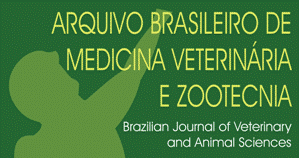ABSTRACT
The productive performance and yield of commercial cuts of the carcass of non-castrate or castrated males feedlot finished and slaughtered at a young age or young steers, fed a diet containing 11.2% crude protein and 3.07 Mcal of digestible energy / kg of dry matter, composed of 50% roughage and 50% concentrate were evaluated. The initial age at the beginning of confinement of young steers and steers were 9 and 22 months, respectively. Greater FW was observed for young non-castrate. The ADG was 31% higher for the steers in relation to young steers. The DMI was 27% higher for steers than young steers and non-castrated consumed 9% more dry matter kg compared to the castrated. The half-carcass weight difference between non-castrated and castrated animals was 43% for steers and 18% for young steers. Higher percentage hacksaw cut was observed in castrated steers. Steers showed higher average daily weight gain, as well as non-castrate steers showed higher final weight. Non-castrate animals have higher half cold carcass weights, front percentage, and of edible portion of the front in relation to castrated.
Keywords:
Canchim; commercial cuts; feed conversion; Purunã; weight gain
